The Stairwell
|
|
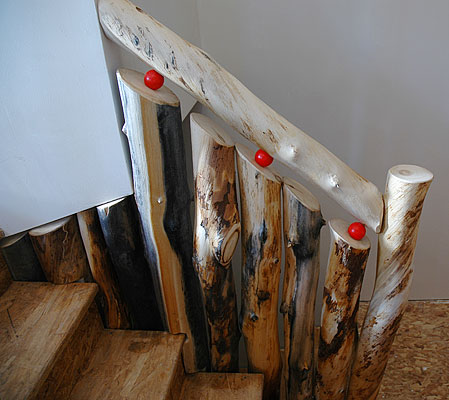
|
Filling the gap
With A Wall of Trees
The stairwell descends to a landing, and then turns 180 degrees. There was a large gap between the two stair sections. I decided to fill it with aspens. This wall of trees would also serve as a support for the handrailings.
Here you can see the trees right after installation. I sanded and varnished the angle-cut tops of the trees. I wanted them to be visible and and easy to touch, so I added the red spheres to force a large gap betwee the verticals and the angled log.
The use of red-painted elements is a recurrent theme in the cabin's design.
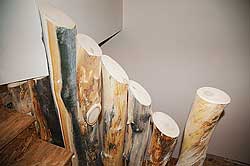
Above: the work in progress.
|
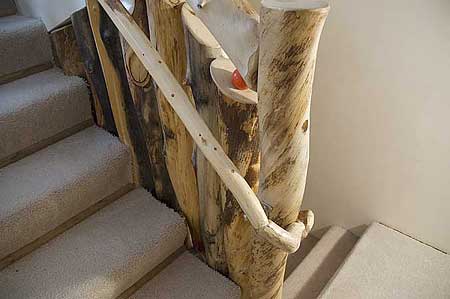
|
Hand Railings & The Wall
The hand railing is made of pine, which is much stronger and straighter than aspen. It needs to be small in diameter. Again, the trees I harvested were standing dead timber, already cured. Unlike the aspens, they were cover with bark. I used my bandsaw to remove much of the bark. Belt-sanding smoothed the exposed wood and remaining bark. I varnished the railings because of the their constant contact with hands.
In the left photo below, you can see a large cut-out in the center log. In order to meet building code the railing has to be a given distance from the "wall". I had to make three of these incursions. They were all executed after I set the logs, because I only learned of the need many months after building the wall. The non-professional carpenter must be flexible.
The logs are bolted with six inch long quarter-inch lag bolts into the stair's boards. I also added transverse boards to the framing to take bolts that weere needed below the the stair's structure. The bolts' heads are inset into 1"-wide holes which will eventually get 1" plugs.
Behind the wall is a dark-stained covering of bead-board plywood. The logs descend all the way to the floor.
The carpet on the stairs is scrap from a carpet-company dumpster in my city neighborhood. Until we decide what to do in the stairwell and bedrooms, the scraps are performing admirably.
|
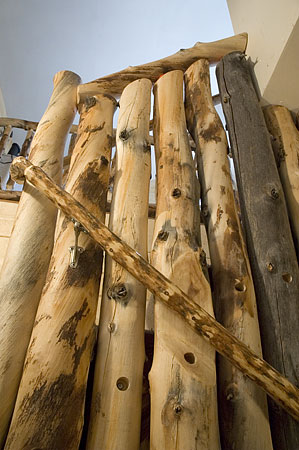
|
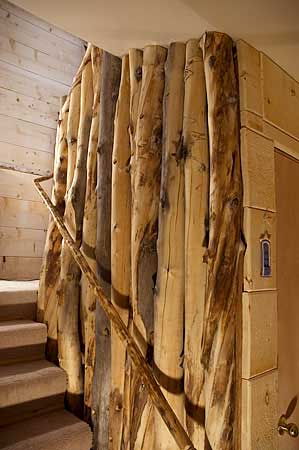
|
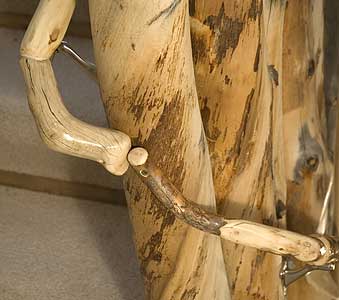
|
Railing Returns
Building code say that the railings must "return" so that hands, clothing, handbags, etc. do not get hooked by the railing. An amateur, I only learned this after failing my first inspection. Improvisation was once again called for.
While hiking, in the months before my next inspection, I noticed some wonderfully twisted roots on a fallen pine tree. I collected a bunch of likely candidates. It took a number of tries, but finally I sculpted my returns. When sanded they revealed beautiful interior wood that was very dense and strong.
To join them to the railing, I drilled holes and set brass rods with glue. Screws bind the returns to the aspen newell post.
|
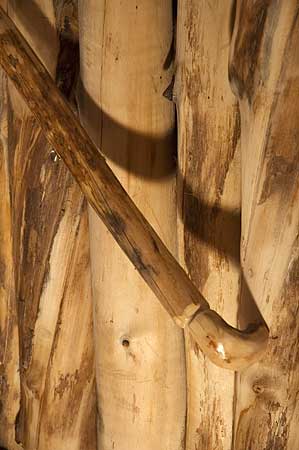
|
Railing Returns
A beautiful curved root section returns the railing at the bottom of the stairs.
|
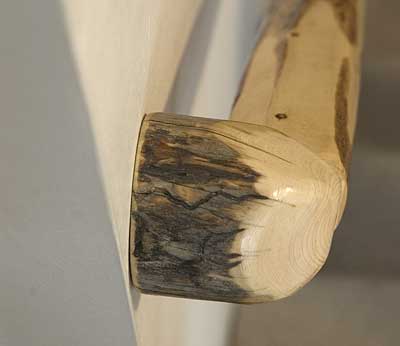
|
Railing Returns
This return is made from a section of pine tree. It finishes the railing at the head of the stairs.
|